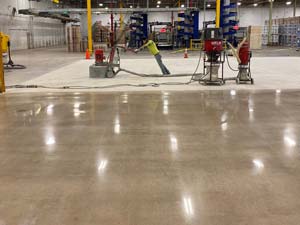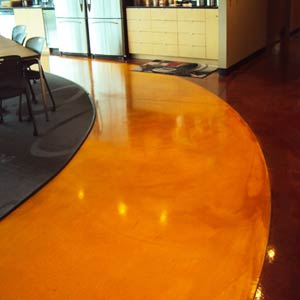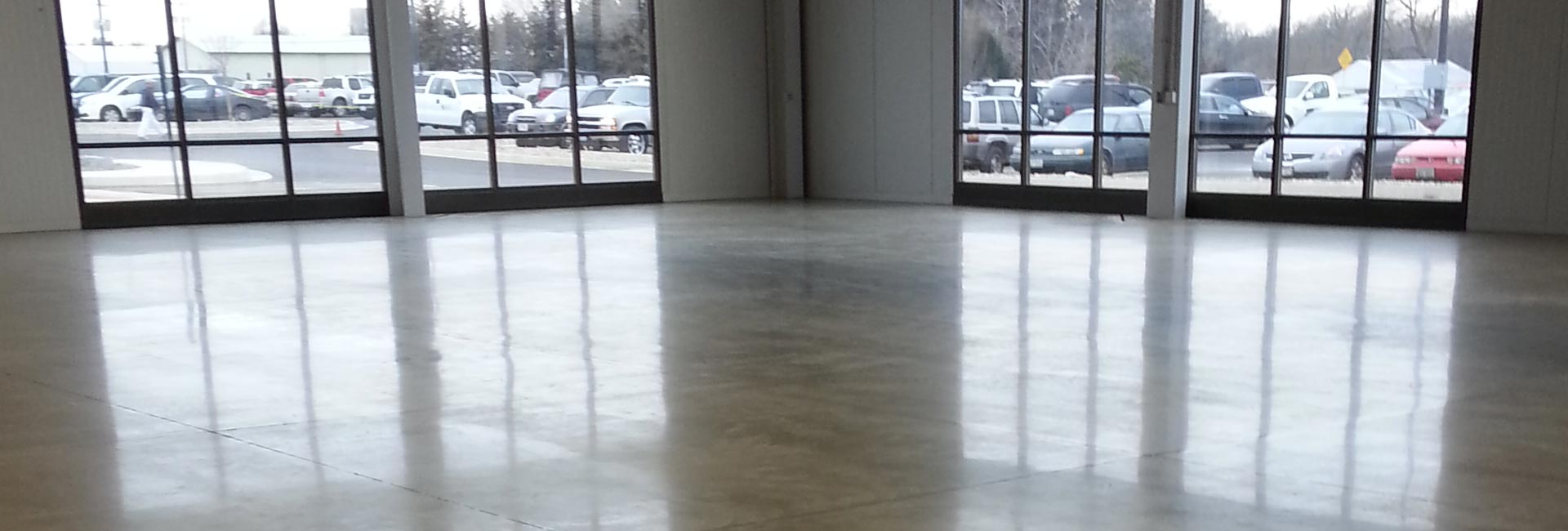Concrete Polishing

Concrete polishing is a highly cost-effective method of finishing concrete floors that requires relatively low maintenance. It is particularly suitable for industrial warehousing and retail stores. The process involves grinding the concrete with metal bonded diamonds, which is divided into five distinct phases.
The first phase, known as the metal bonded diamond phase, is of utmost importance and can be time-consuming. The number of passes required in this phase depends on the condition of the concrete. If there are existing coatings or sealers that need to be removed, additional steps may be necessary.
The second phase, referred to as the low resin bonded (honing) phase, is crucial for smoothing out any scratches left behind by the metal bonded phase. This step ensures a more polished and refined appearance.
In the third phase, known as the densifier phase, a densifying agent is applied to the concrete. This helps to strengthen and harden the surface, making it more resistant to wear and tear.
The fourth phase is the actual polishing phase, where the concrete is further refined and polished to achieve the desired level of shine and smoothness.
Finally, in the fifth phase, a sealer is applied to the polished concrete floor. This helps to protect the surface from stains, spills, and other forms of damage, while also enhancing its overall appearance.
Additionally, during the polishing process, it is possible to introduce color to the concrete floor by staining or dyeing it. This allows for customization and the creation of a unique aesthetic.
Overall, concrete polishing offers a cost-effective and durable solution for finishing concrete floors, making it an ideal choice for various industrial and retail settings.
The industry standard finishes that we offer are as follows:
- Level 1 : Matte Finish
- Level 2 : Low Sheen
- Level 3 : High Sheen
- Level 4 : Gloss Shine
Concrete Dyes and Stains

Concrete stain is a versatile option for enhancing the appearance of your concrete surfaces. It can be easily installed on your existing concrete or, if desired, we can apply a cementatious overlay for a fresh look.
One type of concrete stain is known as reactive stain. These stains contain an active element, typically acid, which interacts with the concrete. When applied, acid stains react with the free alkali in the cement, driving the pigment deep into the concrete. This chemical reaction creates unique and natural-looking color variations, giving your concrete a distinctive and organic appearance.
To ensure the longevity and durability of the stained concrete, clear sealers are applied. These sealers serve as a protective layer, guarding the stain against wear and tear, UV rays, and other potential damage. The choice of sealer depends on personal preference and the desired outcome. Options range from water-based curing agents to epoxies, each offering different levels of sheen. Whether you prefer a glossy or satin finish, there is a sealer available to suit your needs.
By opting for concrete stain and sealers, you can transform your existing concrete surfaces into visually appealing and long-lasting features.
Concrete dyes are commonly incorporated into polished concrete floor systems, enhancing their visual appeal. In contrast to reactive stains, dyes offer a higher level of vibrancy. The application of dyes involves utilizing either water or a solvent, such as acetone, as a medium to transport the pigment into the concrete. This method ensures that the dye effectively permeates the concrete, resulting in a more intense and vibrant coloration. Whether water-based or solvent-based, concrete dyes provide a versatile and effective means of adding vivid hues to polished concrete floors.

